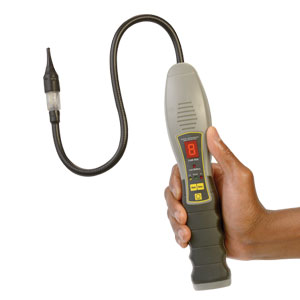


Detector Portátil de Vazamento de Gás Refrigerante
imagem meramente ilustrativa


Descrição
The HHLT-2 refrigerant leak detector is a handheld device designed with a longlasting solid electrolyte semiconductor sensor can detect leaks of all commonly used halogenated (chlorine or fluorinebased) refrigerant gases. They include HFCs (hydrofluorocarbons), CFCs (chlorofluorocarbons) and HCFCs (hydrochlorofluorocarbons). Specifically, the instrument can detect: